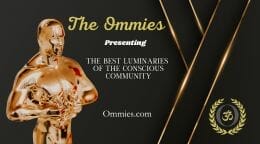Meditation Methods – 3 Ways to Still the Mind

by Arthur Telling
Meditation Methods to Clear the Mind
There are a few effective meditation methods to try. Sitting meditation is the most widely practiced Buddhist way for clearing the mind and attaining enlightenment. The student sits in a lotus-like position or on a chair, hands palms up or clasped together. This encourages the flow and retention of energy in the body. The practitioner focuses on the method of watching and following his breathing.
As thoughts arise, he allows them to pass without attaching to them, continuing focus on breathing in and out. It is a beginner’s method of meditation practice, taught commonly in conjunction with walking meditation. In walking meditation, the student similarly meditates when walking, but focuses on the movement of his legs and where his foot lands.
As the student progresses, other tasks are also introduced as he learns the quieting of mind through daily life routines. These activities include walking, eating, working, washing dishes, cleaning the car, painting the walls, shopping, or anything. This is action meditation, or meditation-in-activity, and can be practiced anywhere and anytime.
Advanced Meditation Methods Available
We find more advanced meditation methods in Buddhist disciplines. Mahayana Buddhism advocates the Chan (Zen) technique called “hua tou.” This relates to the “origin of words,” where “hua” means word and “tou” means origin or head. It is used to examine the state of mind before words form or originate. The student recites a phrase in the form of a profound question, intended for piquing the mind. This is referred to as growing the doubt sensation.
Popular questions are: “Who is mindful of the Buddha?”, “Who is dragging this body around?”, “What is wu (emptiness)?” and “Who am I?” There are no answers for these questions. The critical phrase repeated mentally, continuously, eventually grows a doubt sensation as to the incomprehensible answer to the critical question.
Practitioners of this meditation method could also focus on what comes before the critical phrase, becoming more aware of what exists before the formation of the words of the critical phrase. Penetrating this doubt sensation leads to an experience of a state of mind prior to the formation of words. The practitioner realizes the true nature of reality as it has always been. This is enlightenment, seeing your true nature, even if momentarily, or for a longer time.
The Silent Illumination Meditation Method
Another, second, advanced meditation method for practitioners is Silent Illumination. The student focuses on the entirety of his present moment experience, not any singular quality of breathing or walking or critical phrase. When sitting, he considers the whole-body experience, with awareness on inner nature. When walking and in other activities, he allows his mind to equally consider all that is in his present experience: sight, sound, smell, taste, and physical sensations, focusing on no one thing.
A way of perceiving used occasionally called direct contemplation, where there is no identification of objects and things. There is no discernment and no judging. A flower, not a “flower;” it is what it is as perceived: not red or yellow, not a carnation or a rose, not of a particular shape, or that it is on a stem. The goal is to experience the creation as the eye – not the thinking mind – perceives it.
Buddhist meditation instructors generally tell students to choose hua tou or silent illumination per their preference and to stay with one method and persevere to enlightenment. Oftentimes, when the mind fills with thoughts, practitioners settle down the body, breath, and mind before starting on hua tou or silent illumination.
The Breath Meditation Method
By the breath meditation method, practitioners can watch their breath. They count one on the first outgoing breath and continue counting to ten for each succeeding outgoing breath. After ten, the practitioner goes back to one again. This continues to ten until the practitioner feels his mind is calm and quiet, and ready to begin hua tou or silent illumination.
With mastery of our mental processes using these methods or those from other disciplines, we position ourselves to be in the present moment and to gain enlightenment. Further regular practice of such mental practices can calm and quiet our mind, give inner peace and reduce stress and thus enable us to be more productive and successful in life, work and relationships.
With what we have — just “body, breath, and mind” – we can begin our meditation practice. Local Chan (Zen) centers offer free or low-cost classes and weekend retreats, for beginners and serious practitioners. The two-thousand-plus-year ancient history of Buddhist meditation methods also offer Westerners new to the practice the good guidance of trustworthy meditation instructors. Their purpose is to open society to this exciting journey leading to mental development, peace of mind, and enlightenment.
About the Author
Arthur Telling has written numerous stories and articles on religion, philosophy, and metaphysics. His article, “A Different Jesus Message” appeared in the Nov. 2011 AMORC Rosicrucian Digest. Telling is also the author of “Johann’s Awakening” (a parody of Jonathan Livingston Seagull), and three novels including “Kaitlin’s Message,” exploring the secret sayings of the Gospel of Thomas. His website is: www.arthurtelling.com
OMTimes Magazine is one of the leading on-line content providers of positivity, wellness and personal empowerment. OMTimes Magazine - Co-Creating a More Conscious Reality









